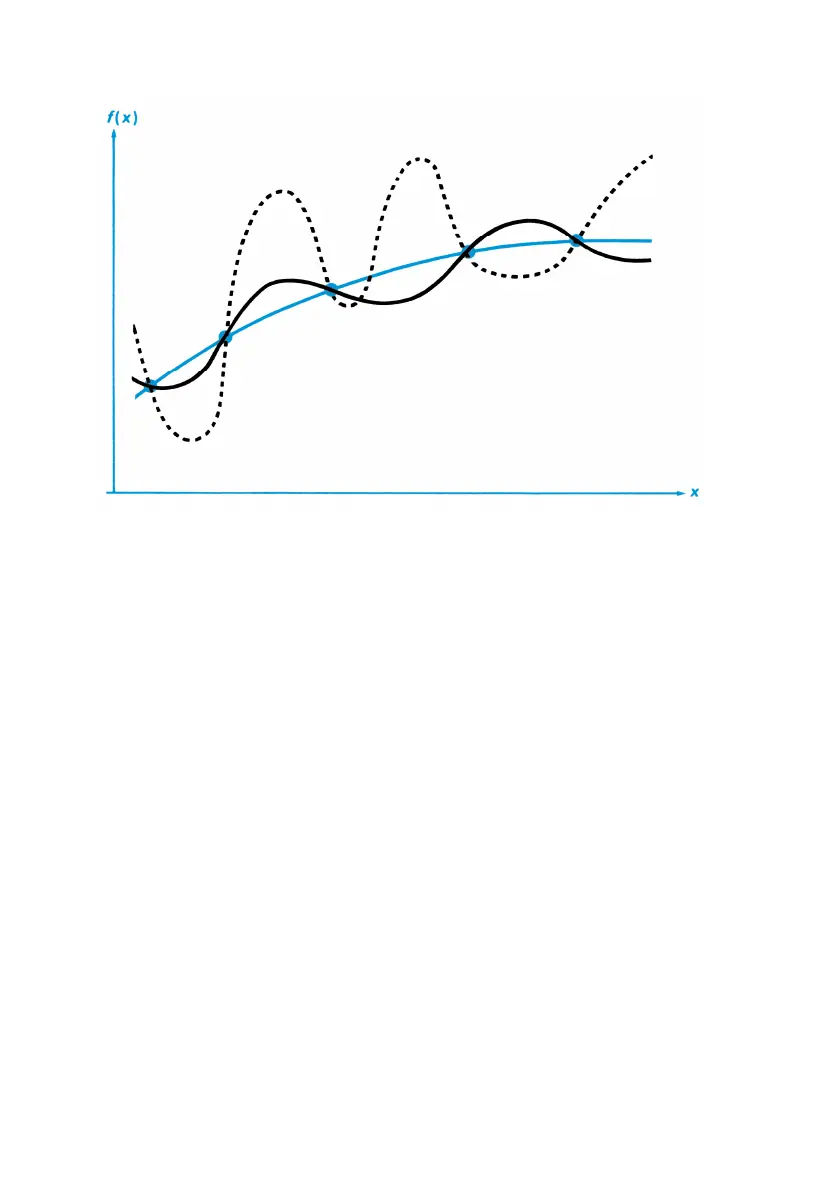250 Appendix E: A Detailed Look at f
With this number of sample points, the algorithm will calculate the same
approximation for the integral of any of the functions shown. The actual
integrals of the functions shown with solid lines are about the same, so
the approximation will be fairly accurate if f (x) is one of these functions.
However, the actual integral of the function shown with a dashed line is
quite different from those of the others, so the current approximation will
be rather inaccurate if f (x) is this function.
The f algorithm comes to know the general behavior of the function by
sampling the function at more and more points. If a fluctuation of the
function in one region is not unlike the behavior over the rest of the
interval of integration, at some iteration the algorithm will likely detect
the fluctuation. When this happens, the number of sample points is
increased until successive iterations yield approximations that take into
account the presence of the most rapid, but characteristic, fluctuations.
For example, consider the approximation of
0
xe
−x
dx .
